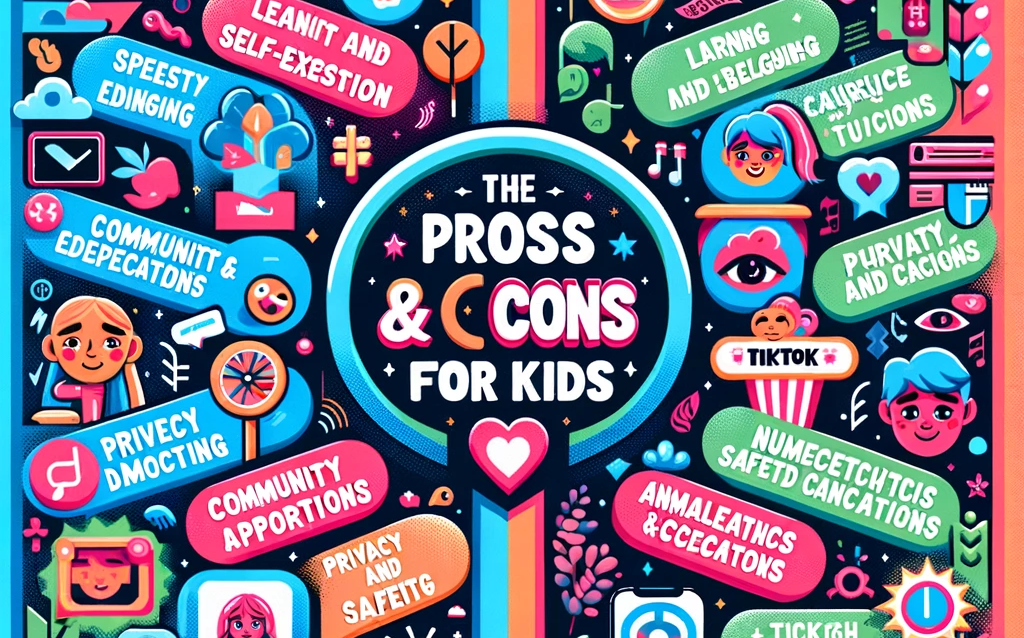The question of whether TikTok is good for kids is complex and multifaceted, touching upon issues of safety, mental health, creativity, and learning. In constructing a comprehensive overview for your website, it’s essential to present a balanced view that considers both the benefits and potential drawbacks of kids using TikTok. Below is a detailed breakdown of the key points to consider:
Benefits of TikTok for Kids
Creativity and Self-Expression
TikTok provides a platform for kids to express themselves creatively through music, dance, art, and other forms of creative content. It encourages them to learn new skills and share their talents with a global audience. The app’s tools and effects can inspire children to experiment with video editing and production, fostering a sense of achievement and innovation.
Learning and Education
With a vast array of educational content, TikTok can be a source of informal learning. It offers tutorials, science experiments, historical facts, and language lessons that can be both entertaining and informative. Many educators and experts use TikTok to create short, engaging videos that make learning accessible and fun for kids.
Community and Belonging
For many kids, TikTok offers a sense of community and belonging. They can connect with peers who have similar interests, which can be especially beneficial for those who feel isolated or marginalized in their offline lives. The platform enables kids to participate in global trends and challenges, fostering a sense of inclusion and shared experience.
Awareness and Advocacy
TikTok has become a platform for raising awareness about social, environmental, and political issues. Participating in these conversations can help kids become more informed and engaged with the world around them. It can also empower them to take action and advocate for causes they care about, contributing to their development as socially responsible individuals.
Potential Drawbacks of TikTok for Kids
Screen Time and Mental Health
Excessive screen time on TikTok can impact kids’ mental health, leading to issues like anxiety, depression, and sleep disturbances. The endless scroll of content can make it hard to disconnect, impacting their overall well-being. It’s crucial to balance screen time with other activities that promote physical and mental health.
Content Appropriateness
Not all content on TikTok is suitable for kids. They might be exposed to inappropriate or harmful content, including videos that glorify risky behaviors, violence, or adult themes. Even with content filters, there is always a risk of encountering unsuitable material.
Privacy and Safety Concerns
TikTok collects user data, and there are concerns about privacy and the potential for data misuse. Additionally, kids may encounter cyberbullying or inappropriate interactions with adults on the platform. Ensuring that privacy settings are appropriately configured and educating kids about online safety is vital.
Unrealistic Expectations and Comparison
Exposure to curated and edited content can create unrealistic expectations about body image, lifestyle, and success. It can lead to unhealthy comparison, affecting self-esteem and body image. Teaching kids to critically evaluate what they see online can help mitigate these effects.
Guidelines for Parents
Use Parental Controls
TikTok offers a variety of parental controls and privacy settings that can help manage what content kids see and who can interact with them. Utilizing these tools can provide a safer browsing experience for younger users.
Set Screen Time Limits
Establishing limits on daily screen time can help mitigate some of the negative impacts of excessive use. Encourage kids to take regular breaks and engage in offline activities to ensure a balanced lifestyle.
Open Communication
Encourage open discussions about what they see on the platform. Talk about the difference between online personas and real life, and discuss the content critically. Open dialogue helps kids feel comfortable sharing their online experiences and concerns.
Monitor Content
It’s essential for parents to be aware of the type of content their children are consuming and creating on TikTok. Monitoring doesn’t mean invading their privacy but being actively involved in their digital life. Regularly check in on their activity and provide guidance when needed.
Educate About Online Safety
Teach kids about the importance of online safety, including not sharing personal information, the risks of interacting with strangers, and how to report inappropriate content. Equip them with the knowledge to navigate the internet safely and responsibly.
Conclusion
Whether TikTok is good for kids depends on various factors, including the individual child, how they use the app, and the level of parental guidance and supervision. While TikTok can offer meaningful benefits in terms of learning, creativity, and social connection, it also poses risks related to mental health, content appropriateness, and online safety. A balanced approach, combining the benefits of digital literacy and creativity with mindful usage and robust safety practices, can help mitigate these risks, making TikTok a more positive experience for kids.
By staying informed and actively involved in their children’s digital activities, parents can help create a safe and enriching environment that leverages the positive aspects of TikTok while minimizing potential downsides.

